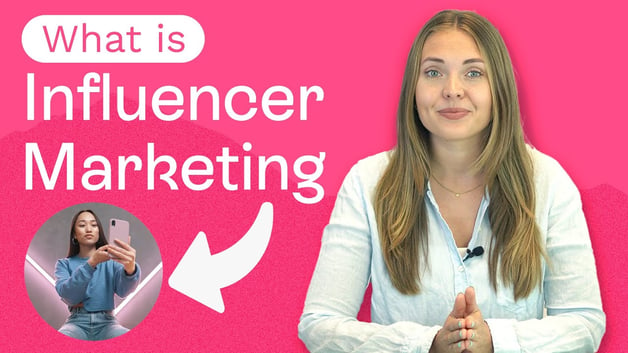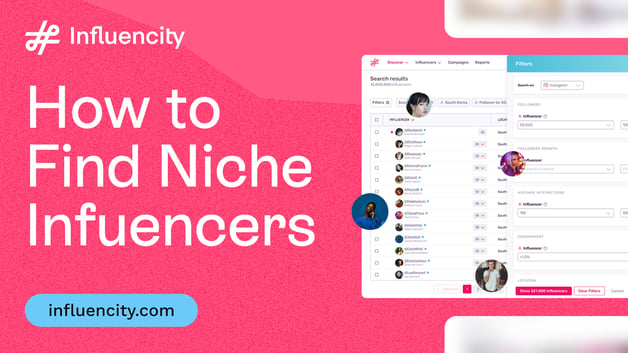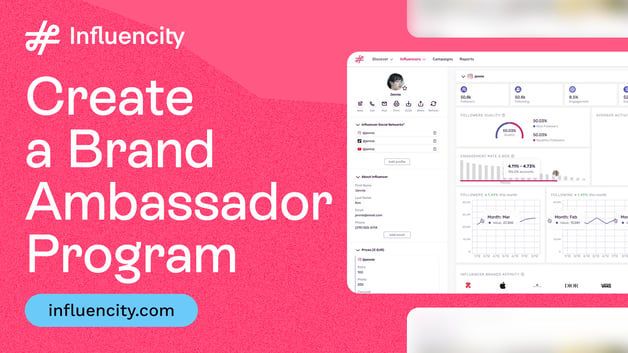How to Effectively Identify the Right Influencers for Your Brand Using Data
In today’s competitive digital landscape, influencer marketing has become a crucial strategy for brands looking to increase visibility, engagement, and ultimately sales. But here’s the catch: influencer marketing isn’t just about partnering with the most famous or most-followed individuals out there — it’s about finding the right influencers who truly align with your brand values and can authentically connect with their audience.
Choosing the wrong influencer can lead to wasted budget and missed opportunities. That’s why making data-driven decisions is critical in identifying influencers who will actually move the needle for your business. It’s not just about reaching as many people as possible; it’s about creating meaningful connections and generating real impact.

This blog will walk you through the essential steps to identify and select the best influencers for your campaigns, from analyzing follower numbers and engagement rates to considering the type of content they share and the platforms they use. We’ll also dive into the power of leveraging influencer marketing tools, such as Influencity, to streamline the process and ensure you’re working with influencers who can truly help elevate your brand.
Let’s dive in and explore how you can make smarter, data-backed choices to find the right influencers for your next campaign.
Advice for finding right influencers through data
Let's be honest — influencer marketing isn't about hiring the most famous face you can think of (no offense, Bruce Willis). It's about making smart, strategic choices that actually move the needle for your brand. Choosing the right influencer isn't just one step in your campaign — it is the campaign. Get that wrong, and everything else starts off on the wrong foot.
In today's influencer marketing landscape, brands recognize that intuition alone is insufficient. The selection process has evolved beyond choosing individuals merely based on personal affinity or follower count. Instead, data-driven decisions, genuine brand alignment, and the potential to create meaningful impact are paramount.
Data doesn’t lie.
So, what data is truly important? The following variables must be studied when trying to find the best influencers to promote your brand.
And here's my personal advice: don't be impressed by big numbers at first glance. Sometimes a profile with 20,000 followers can give you much more return than one with 2 million. What matters is not just reach, but the real connection with their audience. So yes, let's look at the data. But the right data.
Number of followers
The number of followers isn’t the most important variable in influencer marketing, but it is, of course, data that needs to be taken into consideration. When making an investment, it’s important to know the audience you could potentially reach and, as you can probably imagine, the bigger the better. However, this data alone won’t provide you with much insight, or at least it won’t in most cases. It may help you discard certain candidates due to having smaller followings, but right influencers with bigger audiences are not always the best choice. Keep reading and you’ll find out why.

It's tempting to focus solely on follower count when choosing an influencer, but the reality is far more nuanced. According to a report by Sprout Social, 77% of Instagram influencers have fewer than 10,000 followers, highlighting the dominance of nano-influencers on the platform. In my experience, these profiles tend to create a more authentic connection with their audience, which can lead to greater trust in the brand.
Additionally, the influencer marketing industry has seen significant growth, reaching a projected value of $24 billion in 2024, according to Brand the Change. This surge reflects how brands are increasingly valuing collaborations with influencers across all audience sizes—not just the ones with massive followings.
From my perspective, prioritizing audience quality and influencer authenticity over sheer follower numbers has consistently led to more effective campaigns and stronger public relations outcomes. It's crucial to evaluate not just how many people follow an influencer, but how engaged and connected that audience really is.
Audience engagement rate
What good is an influencer with a big following, but a low engagement rate? Brands want profiles that can generate conversation amongst their public so that they get involved, share their opinions, share content and talk about the product.
Some influencers have very active followers, whilst others seem to have a legion of zombies behind them. Obviously, the former are more appealing, even if their following is smaller, since they’re the ones who are going to help you achieve your campaign objective; to make your product the centre of attention.
It's important to keep in mind that the engagement rate measures how actively followers interact with an influencer's content, including likes, comments, shares, and mentions. This metric is key to evaluating the real impact of a collaboration.

According to a study by Binfluencer, micro-influencers (with fewer than 10,000 followers) have an average engagement rate of 8.21%, while influencers with over 50,000 followers only see a rate of about 4.1%. This shows that a smaller but engaged audience can be more valuable than a larger but less active one.
Additionally, with tools like Influencity, you can analyze these metrics in detail, helping you find influencers who truly generate conversations and active participation from their audience. This kind of data is essential to ensure your campaign has the highest possible impact.
In my experience, prioritizing the quality of engagement and the authenticity of the influencer over sheer follower numbers has led to more effective campaigns and stronger public relations outcomes. It's crucial to analyze not just how many followers an influencer has, but also how they interact with their content and how engaged their audience is.
The type of content they share
It’s important to evaluate what kind of content influencers publish and determine whether or not it fits in with your brand or product. Content quality and values are two very important aspects to take into consideration.
Additionally, the type of content an influencer creates and shares has a direct impact on brand perception. Influencers who post authentic content aligned with their values tend to form a deeper connection with their audience. It’s essential to ensure that the influencer’s content reflects the principles and image of the brand to avoid any discrepancies that might harm the brand's reputation.

How to choose right influencers for you campaign
It’s time to ask the big question; how do I choose influencers for my campaign? Where do I begin? There is no single way to do so, in fact, quite the opposite – there are many different ways you can go about narrowing down the search for the perfect influencer. For example:
By sector
You don’t have to be a rocket scientist to know that a well-known influencer within your sector is more likely to impact potential users for your product with their posts. In my experience, it’s not just about sector relevance. It’s important to find influencers who are authentic advocates of the sector and have a deep understanding of their audience’s needs and preferences. When the influencer truly believes in the product and can integrate it naturally into their content, the collaboration doesn’t feel like just an advertisement, but rather a genuine extension of their narrative.
By determining your target audience’s preferred social network
As we mentioned previously, influencer profiles on different social networks may vary considerably. If you’ve clearly defined your target audience, it’ll be easier to see which social network they’re more likely to use and therefore limit your search for the right influencer to said platform. However, it’s also important to remember that certain platforms can be more effective for different types of content. For example, Instagram is ideal for visually appealing content, while TikTok excels with short videos and trending sounds. By understanding your audience's social media habits and targeting your influencer search toward the platform that best suits their preferences, you can maximize the impact of your campaign.

By analysing age groups
Each influencer’s fan base has a different demographic and age groups can be a key statistic to study when trying to find the perfect influencer for your brand. Why? Age is directly related to sales. It’s also important to take into account the mindset of the audience. Younger audiences might be more willing to try new products, but older audiences tend to be more loyal and spend more on premium products. Understanding not only the age but also the buying behaviors and attitudes of your target audience will help you choose an influencer whose audience aligns perfectly with your brand’s message and objectives.

Agility and impartiality; top tools for finding influencers
You may be thinking at this point that choosing the right influencer is tricky business and only a data scientist is capable of evaluating all of these variables. And to some extent, you’re not wrong. It’s for that very reason that brands have began to turn to tools to help them with the task of filtering and selecting target audiences, so that choosing influencers doesn’t become such a complex task. Nowadays there exist tools, such as Influencity, which provide brands with all relevant information regarding influencer profiles.
Use of Tools to Find the Right Influencers and Streamline the Process

Tools like Influencity are essential in this process. These platforms allow you to filter and analyze influencers based on key metrics such as engagement rate, audience demographics, and content relevance. This helps brands quickly narrow down the best options without wasting hours manually searching for influencers. Additionally, with these tools, you can also track campaign performance and measure return on investment (ROI), ensuring that your collaboration is actually delivering results.
Tags:





















%20and%20How%20Can%20They%20Benefit%20Your%20Brand%20article.jpg?length=628&name=What%20Are%20Key%20Opinion%20Leaders%20(KOL)%20and%20How%20Can%20They%20Benefit%20Your%20Brand%20article.jpg)








